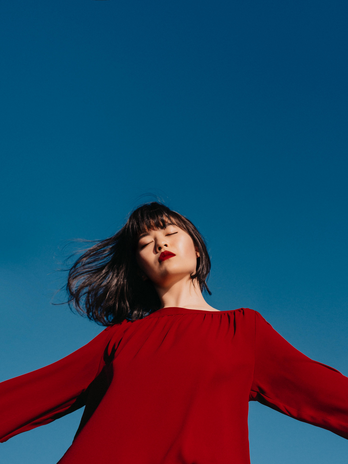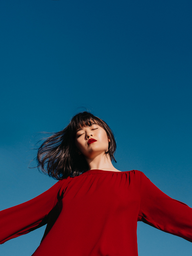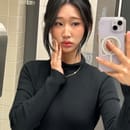The fetishization and infantilization of East Asians has been an ongoing problem in the West, exploding after Korean boy bands, anime, and Douyin makeup became some of the most popular trends in the 2010s and 20s. It seems that with every new social media trend about tteokbokki or sparkly eyeshadow, people tend to overlook the microaggressions and harmful stereotypes that are still plastered over every East Asian face—regardless of their supposed trendiness.
Though this has been an issue for many years, it has evolved right before our eyes, creating new issues within Asian communities. For example, older generations might know the stereotype of “mail-order brides” or having “smelly” ethnic food, but what do they know about people who identify as RCTA (Race Change to Another)? Do they know of the “submissive” stereotype placed mainly on Asian women due to media like anime and K-pop?
In reality, what many people don’t realize, both new and old generations, is that a lot of these stereotypes and prejudices are metamorphosed. The submissive characteristic is associated with mail-order brides, but infantilized female characters in anime and “aegyo” performed by K-pop idols has extended upon the original assumption.
Now, what’s surprising about Wasians is that Western audiences tend to fetishize them much less than Asian audiences do. This comes with its own set of problems because plenty of the criticism coming from Western/non-Asian audiences comes from the deep-set fetishization of purely Asian individuals. In simpler words, a lot of Asian fetishizers will pass up on a Wasian for a full Asian. We see this happen a lot within K-pop communities, where there is a large amount of infantilization and fetishization from international fans. In the newer generations of K-pop, it seems like companies are attempting to branch out more to make the genre more global rather than local, and one of the most commonly used techniques is to debut mixed or non-East Asian idols. However, though plenty of fans couldn’t care less about the race of the idols they like, there’s also plenty that care way too much. Idols like Huening Kai from TXT, Vernon from SEVENTEEN, and Jeon Somi (previously from group IOI) were all heavily criticized for being mixed race. People often said that their “visuals” were too Western and that they looked “too white” to be a K-pop idol.
If I had to take a guess as to why Asians tend to be the ones that put Wasians on a pedestal, it would start with the Eurocentric beauty standards in East Asia.
Korean (and other Asian) beauty standards are quite widely known to be very harsh and almost impossible to fit. A tall but slim nose, big eyes, and being tall (but not too tall!) are just a few traits on the extensive list. One might notice that many of these features that are seen as desirable are more often found in non-East Asian and usually white individuals. For example, though double eyelids and big eyes aren’t impossible for an East Asian individual to have naturally, they’re more commonly seen in other races and ethnicities.
There are also plenty of stereotypes that surround East Asians and their supposed “fetish” for white people. A very common dig at East Asian women revolves around their dating history and whether or not they dated their own race or outside of it. The Eurocentric beauty standards are what many use to back up this claim, and it became such a picked-apart phenomenon that a few students from Oxford University published an entire study on it. Of course, this study became another common reference for those who criticized Asian women and their dating preferences, and this bleeds into how Wasians are often treated by Westerners; the assumption that their mother was a helpless and submissive damsel in distress that was rescued by a white man.
However, many Asians who still live in their home countries (not Asian-Americans) also criticize this specific pairing, often saying that Asians who date outside their race, ethnicity, or nationality are “bananas” or “twinkies” — ”yellow” on the outside, and white on the inside. It seems to be a common assumption that if an Asian person moves away from their home country at all, they’re deeply criticized regardless of the choices that they make.
So, what’s the deal with Wasians? It seems like they’re pretty hated on both sides, right?
Wrong.
Yes, it is true that Westerners/non-Asian individuals criticize the mere existence of Wasians. However, things are changing just as quickly as those fleeting trends on TikTok alongside Buldak ramen recipes and Korean skincare. This is not to say that Wasians are not still discriminated against, nor does it mean that their struggles and insecurities are not valid.
Popular television shows and movie series like “The Summer I Turned Pretty” and “To All the Boys I’ve Loved Before” are changing people’s minds. Jenny Han, the creator of both of these series, has played a particularly large part in this shift, influencing millions of people with her widely successful books that were later adapted into a TV series and a movie trilogy. Both Belly and Lara Jean, the main characters in these two series, are portrayed as Wasian, with a white father and an Asian (Korean) mother. Additionally, Belly and Lara Jean also pine for white men. Even background couples and secondary characters have been similarly matched. People have gone as far as to compare her to Mindy Kaling, who was infamous for casting mainly white male leads alongside Asian (Indian) female leads in shows like “The Office” and “Never Have I Ever.”
While most of the praise for Wasians came from Asians in the beginning, it’s starting to extend into non-Asian and Western spaces because of popular media. We can assume that a lot of the praise from Asians was due to beauty standards and the romanticization of things like “The American Dream” (i.e., an Asian woman leaving her home country and marrying a wealthy white man). Now, this opinion is extending over to places like America, where Wasians were previously criticized or simply overlooked. It could be seen as a positive thing; acceptance and celebration should never be torn down. It could also be seen as a negative change—especially because Wasians are starting to be fetishized just like Asians. In fact, it might even be going further than that, as Wasian “obsession” has become the new “yellow fever” for some.
Is it colonization? Is it history? Is it just “natural”? However people choose to defend or refute this phenomenon, it still exists, and it’s still very harmful to everyone involved. In an ideal world that does not discriminate based on race, it would truly not matter if someone was mixed. In the end, we are all human.


